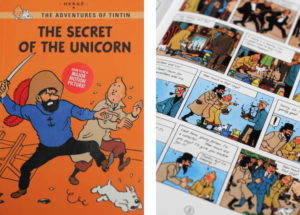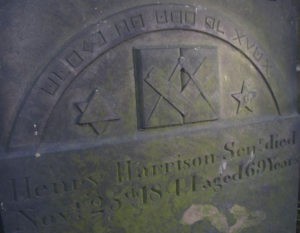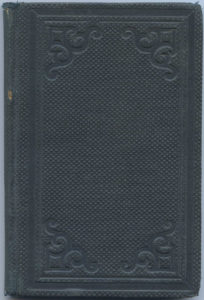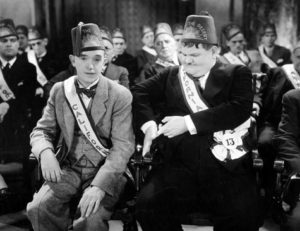A few weeks ago, I stumbled upon a website called The Great Lost Treasure: across its sequentially-numbered twenty-four pages, it builds up a case for arguably the most audacious (and certainly the most all-encompassing) cipher history / mystery theory I’ve yet seen.
The person behind this website is Ron Justron, who sees his over-arching theory as falling somewhere between [inconveniently true] and [a thorn in nearly every other cipher theorist’s side]. It’s not hard to see why such people get so annoyed by him: his cipher mega-theory aspires not only to disprove almost all the cipher theories out there, but also to replace them, insofar as – to him – they (pretty much) all are trapped within the explanatory cage of his mega-theory.
How should I try to do justice to this awesomely epic construction? I’ll try to start at the beginning…
The Great Lost Treasure
Justron’s starting point is a treasure mystery associated with (the very real) Admiral Lord George Anson (1697-1762), and (apparently) described in Andrew Westcott’s (1999) book “El Tesoro de Lord Anson”. (If I mentioned that George Anson was born in Shugborough Hall, you might be able to guess part of where this is going).
According to Justron’s account, a treasure horde was entrusted to a certain Don Juan Esteban de Ubilla at the end of the Spanish War of Succession in 1714: the Spanish Hapsburgs, having lost their ownership of the Spanish Crown to the French House of Bourbon, passed it to Ubilla for him to secrete in South America for safety.
Note that Captain-General Don Juan Esteban de Ubilla definitely existed. In 1715 when the convoy of treasure ships he was commanding on the way back from Havana to Spain was hit by a hurricane close to the Bahamas, over a thousand people lost their lives, including Ubilla himself. Only one ship, the Grifon, managed to avoid catastrophe.
One treasure site recounts the story that the Capitana went down with the jewels Philip V had been required to provide as a dowry for his new wife, the Duchess of Parma: these included “a heart delicately crafted of 130 pearls, a 74 carat emerald ring, a pair of pearl earrings-each complemented with a 14 carat pearl, and a rosary of pure coral the size of small marbles“. This much-searched-for royal trove was used as a plot device in films such as The Deep (the 1977 Peter Benchley-written film, not the 2013 Icelandic film) and Fools Gold (which I thought was a bit pants, though not offensively so).
So is this Justron’s “Great Lost Treasure”? Actually no – for once, it is nothing so boringly mundane as gold, silver or diamonds: far more audaciously, Justron asserts that it is the “set of vessels, items and furnishings for the Tabernacle in the Wilderness” that Moses had had constructed, and which came to be housed in the Temple of Jerusalem. And then Justron raises the stakes yet higher, by asserting that the “Holy Grail” has been mistranslated, and that what we call the Holy Grail was actually part of the Davidic Temple trove.
The Über-Map
According to Justron’s narrative, once Ubilla had concealed this heavenly stash in South America, he somehow managed to convey a map of where he hidden it to the Royal Society in London, which (he says) “then became the reluctant stewards of what was considered to be God’s own treasure”.
According to Justron, the list of things that Ubilla passed across included (though note that many of the details come from a separate cipher mystery, courtesy of Richard Latcham, which I’ll cover in Cipher Mysteries when my brain has stopped hurting from this one):
1. A chart of the region.
2. A reference to latitude and longitude using the alchemically themed colours of the fixed stars known as the Tetramorphs and their zodiacal associated constellations.
3. A series of consecutive and geographically descriptive codewords in Spanish;
* Trinidad (Trinity)
* Herradura (Horseshoe)
* Pan da Azucar (Sugarloaf). This is a ‘sailing mark’, a distinctive rock to identify the island and the pass through the surrounding reef.
* Playa Blanca (White Beach)
* Aguada (Water)
* Ebanin (Marked rock)
4. The ‘Cero tres Puntas’: literally the ‘Zero (cipher) of the longitude for the Three Points’.
Justron also asserts that Ubilla also managed to convey a copy of the map to Spain, which was used for a later treasure hunt (Diego Alverez, Luke Barrett, Archer Brown and Killorain: ‘The Treasure of the Tuamotus’ or ‘The Bosun Bird Treasure’).
As you’d perhaps expect, Justron has decrypted the map’s subtleties: he used the Shugborough monument letters, an simple substitution cipher key used by “a lawyer names Zwack in 1786 during a political raid in England of a secret society called ‘The Illuminated Ones’, the magic number 19, the Golden Section, and a map of some South Sea islands.
The trail, then, leads to Mururoa Atoll (where some atomic tests were famously carried out): if you suddenly feel the urge to book your flight there, rest assured I won’t be offended if you open another tab in your browser. 🙂
The Cornelius Patrick Webb Letter
Justron also points to an odd letter dated to later in the 18th century:
I, Cornelius Patrick Webb, Captain of his Majesty’s Navy, Master of the Unicorn, only survivor of the Horseshoe Expedition depute this account to my Lord George Anson First Lord of the Admiralty (courtisualy) because I judgeth malady which ailleth me will not permit to wait. Departure Unicorn June nineteen crossed Cap Horn December six arrived at position lat thirty D eight M. January thirteenth opened royal orders, located secret entrance, translated Crown’s belongings, located eight hundred sixty four bags gold. Two hundred bars gold, twenty one barrels precious stones and jewellery one golden trunk containing rose of gold and emeralds, two foot high, one hundred and sixty chests with gold and silver coins. January twenty four fortress destroyed. When returning the twenty-eight of January before a violent storm, the ship suffered serious damage and lost a mast. We were forced to shelter on an island; the third of February found us at Longitude … Latitude… and it was impossible to carry out repairs for the safe transportation of the treasure; transferred to a new hiding place valley of Anson a cable length from the observation point in direction great yellow stone depth fifteen feet. Unicorn repaired for emergency crossing course Valparaiso; informed of plans for mutiny while the ship was becalmed to the West of Valparaiso I made use of the auxiliary boat (Pinnace). Unicorn blown up by me with all on board, six loyal men sacrificed for the cause of the Crown, I arrived at Valparaiso. 1761
Now, the problem for Justron is that even if this letter is genuine (and personally I’m still struggling to get to the stage where I believe that it is), its contents doesn’t quite fit his über-narrative. However, his resolution is to infer from internal evidence that the letter was originally written in Latin and then mistranslated into English.
Anson’s Papers
When Lord Anson dies in 1762, his papers were (says Justron) found to contain a file containing enciphered or coded details of something that was called the “Horseshoe expedition”, which was presumed to refer to the Webb Letter above. Justron continues:
“As the Webb report mentioned the ‘Valley of Anson’ and with Lord George Anson having published a book [“A Voyage around the World”, 1748] with a map of Juan Fernandez Island, anyone with a modicum of imagination would have recognised the similarity in shape between the robes of the Shepherdess on the monument and the island of Juan Fernandez. From that day copies of the Shepherdess’ shape were made and circulated as a ‘treasure map’.
Justron also observes that “An interesting modification that occurs for each region where the story is retold is to give the ‘dying sailor’ a local sounding name or the name of a person known to the inhabitants.” For him, the prototypical “dying sailor” was Cornelius Webb, and every one of the numerous ones ones thereafter were merely story-telling clones of Webb.
And this tweak helps him build two additional storeys to the top of his argumentary tower: that not only are all treasure maps ever made little more than variations on Anson’s original treasure map hidden in plain sight on the Shepherd’s Monument at Shugborough, but also all “a dying sailor bequeathed me this treasure map” stories are variations of a single meta-story.
Oak Island and Beale Papers
Justron then takes a long digression into the murky tunnels and waters of Oak Island. And then into the Beale Papers, which he says were written by some Freemasons in an attempt “to alert other Freemasons they had found the Cerro tres Puntas”.
Harold T. Wilkins and Fake Maps
Ron Justron’s next target is the wonderfully frustrating set of maps found in the 1930s: he asserts that nutty proto-Fortean hack Harold T. Wilkins had found Lord Anson’s Papers in the 1920s, and so decided to construct a long series of maps in some kind of homage to the Anson über-map. These then (so the story goes) were inserted into oldish items of furniture, which then all came into the possession of collectors Guy and Hubert Palmer in Eastbourne between 1929 and 1942.
After Hubert Palmer’s demise, the maps passed to his nurse (Mrs Dick), who then sold them all off to a mysterious Canadian/American syndicate in 1957: they have never been since since.
For Justron, however, Wilkins was pulling everyone’s legs, because he clearly (writes Justron) knew that the location referred to by Anson, Webb and Ubilla lay somewhere else entirely. And this is because – asserts Justron – it was also Wilkins and Latcham who were behind Latcham’s fake cipher / treasure maps at Guayacan.
After a digression on the Tokugawa treasure, Justron then starts to get to what I can only describe as the real meat of his argument (yes, there is in indeed more to go yet). Which links Harold T. Wilkins to…
Rennes-le-Chateau and the Priory of Sion
[Wilkins] decided to leave for posterity the final part to the grand riddle. This part would be the direct pointers to Lord George Anson and his map. […] Unfortunately Harold T Wilkins selected a right bunch for his chosen dupes; rather than just carry the clues for others to find they goofed the whole thing up completely.
In the mess that the myth of Rennes le Chateau has become one could dismiss the whole thing as a fraud perpetrated by a group of French associates in the 1950s for their own gain.
In reality the story of Rennes le Chateau is that of it being just another Masonic hoax/riddle in which the real codes have to be identified and decrypted.
Yes: just when you thought there were no more cipher-related mysteries to throw into the same bubbling pot, the Priory of Sion appears. Justron’s long argument that accompanies this claim reduces to: Wilkins was the Svengali who set the whole thing up (apparently with Anson’s Great Lost Treasure in mind), but with Wilkins’ death in 1960 everyone involved seemed to lose the plot.
The Secret of the Unicorn?
But Justron has left the best to last – and it is so stunning that he hasn’t even put it on his website yet. Which is that the Tintin adventure The Secret of the Unicorn (published in Le Soir in serial form between 1942 and 1943) contains embedded clues to much of the above.

Justron writes:
“Unfortunately the main part missed too was the hint given in Tintin, that is by assembling the (RLC) parchments, you’ll be led to the ancestral hall of a famous mariner where you will learn the Secret of the Unicorn.”
Of course, for Justron the ancestral hall of a famous mariner being referred to is not Hergé’s fictional Marlinspike Hall of his fictional Sir Francis Haddock, but without any shadow of a doubt Shugborough Hall, birthplace of George Anson. And the Unicorn is, well, the Unicorn (of course).
The Great Lost Treasure, Really?
For me, there’s something endearingly syncretic – almost Rastafarian, with their “Truth of All Truths” – about Justron’s sprawlingly all-encompassing cryptophily. For him, the whole cipher/treasure endeavour appeals to an Ur-story lurking beneath the suburban drear of mere data, much like Joseph Campbell inferred a single story laying beneath all myth.
Naturally, I don’t believe it for a minute: but I wouldn’t, would I? I’m a getting-the-details-really-properly-right kind of guy who likes to understand the arguments and evidence behind each cipher/treasure/history/mystery, one at a time. Which means that I don’t really believe that Justron has sufficient evidence to prove any single one of his claims about these historical mysteries, even though he is convinced all his conclusions holistically support one another.
All the same, Justron’s mega-narrative steamrollers its way through a whole load of cipher mysteries in (what, to me at least, comes across as) a fresh new way, and I can honestly say that it has helped make me look afresh at a lot of the ground he has covered over the last decade.








